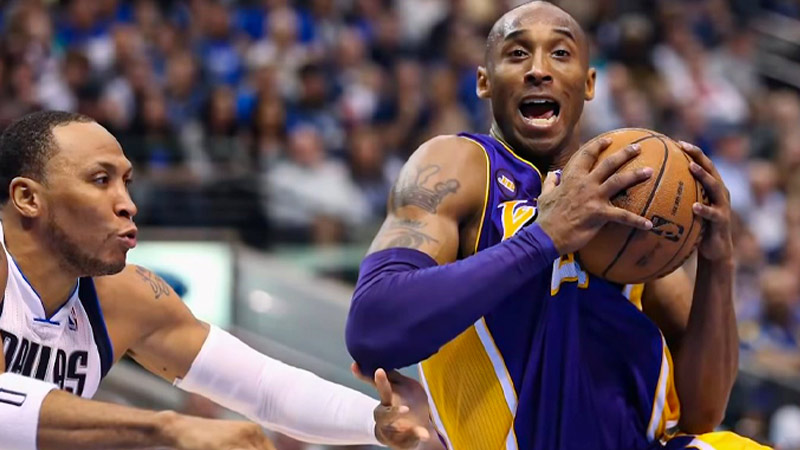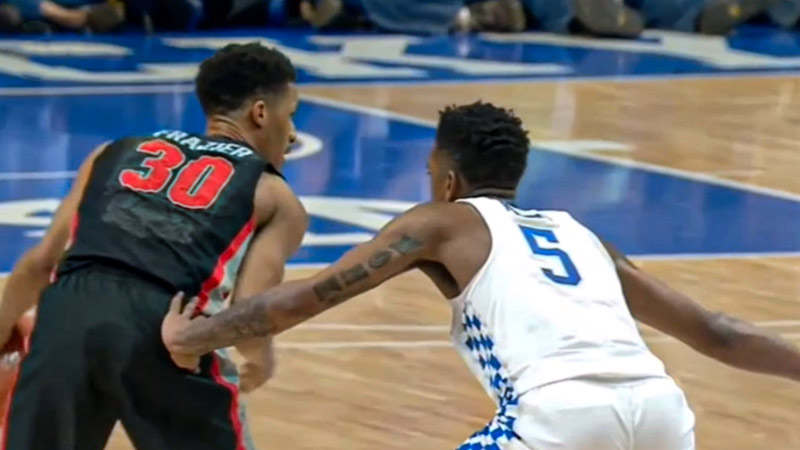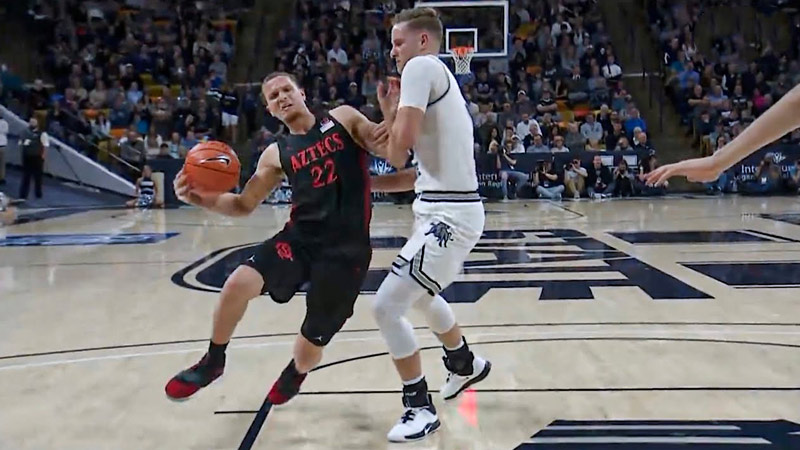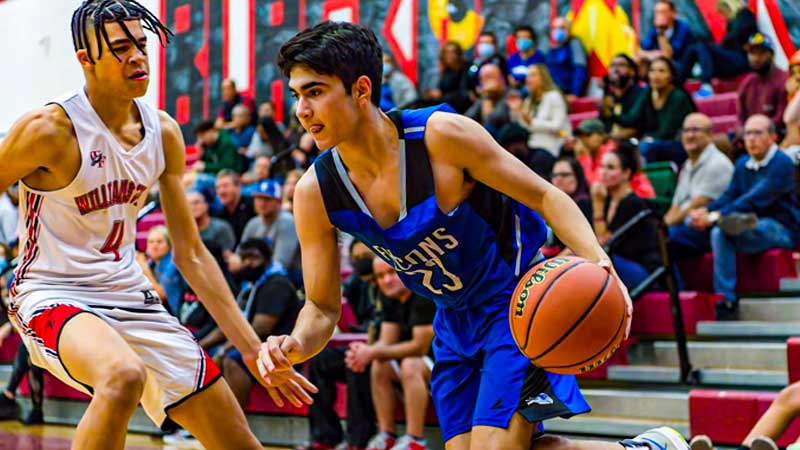Basketball is a game that requires skill, finesse, and strategic defensive techniques. One such technique that has been a subject of debate and rule changes is hand-checking.
Hand checking refers to the act of a defender making physical contact with an offensive player by placing their hand or hands on the opponent’s body.
In this article, we will explore the concept of hand-checking in basketball, delve into the rules and regulations surrounding it, and discuss the changes made to the hand-checking rule over the years.
We will also examine the reasons behind the NBA’s ban on hand-checking, and touch upon the implications of hand-checking in the NCAA.
By the end of this article, you will have a comprehensive understanding of hand-checking and its impact on the game of basketball.
What Is Hand Checking in Basketball?
Hand checking in basketball refers to the defensive technique where a defender makes physical contact with an offensive player by placing their hand or hands on the opponent’s body.
It is a method used to impede the progress of the offensive player, maintain a defensive position, and disrupt their movements.
Hand-checking has been a fundamental aspect of basketball defense for many years, but its extent and allowance have changed over time.
In the NBA, hand-checking has been restricted and is now generally prohibited, while in other leagues, such as the NCAA, it may still be allowed to a certain extent.
The rules and enforcement surrounding hand-checking vary depending on the specific league and level of play.
What Is The Hand-Checking Rule?
The hand-checking rule in basketball pertains to the amount of physical contact a defender can make with an offensive player while defending.
Hand checking, as mentioned, refers to the defensive technique where a player places their hand or hands on the offensive player to impede their progress or maintain a defensive position.
It was a common defensive tactic used to apply pressure, disrupt offensive plays, and limit the movement of the opposing player.
Changes to Hand-Checking Rules

Over time, basketball’s governing bodies recognized the need to enhance offensive freedom of movement and reduce physicality on the defensive end.
As a result, various changes were made to the hand-checking rule to minimize excessive physical contact and create a more open and skillful style of play. Let’s explore some key changes:
Introduction of Defensive Three-Second Violation
The NBA and FIBA introduced the defensive three-second violation to restrict defenders from camping in the key area for extended periods. This rule discourages excessive contact and encourages defenders to actively guard their assigned player.
Hand-Checking Restrictions
Hand-checking rules have been refined to limit the amount of contact allowed. Defenders are no longer permitted to make continuous, sustained contact with their hands or arms on the offensive player.
Instead, they must rely on their footwork, positioning, and defensive skills to impede the opponent’s progress.
Emphasis on Freedom of Movement
Officiating has shifted towards protecting offensive players’ freedom of movement. Referees are more vigilant in calling fouls for impeding an offensive player’s progress through physical contact, especially when it affects the player’s ability to make cuts, change direction, or create space.
Impact on Defensive Strategies
The changes in hand-checking rules have significantly influenced defensive strategies and tactics in basketball.
Defenders now need to rely more on their lateral quickness, agility, and defensive positioning to contain offensive players. Let’s explore the impact in more detail:
Footwork and Lateral Quickness
Defenders focus on improving footwork and lateral quickness to stay in front of offensive players without relying on physical contact. Proper defensive stance and agility become crucial in preventing drives to the basket.
Positioning and Anticipation
Defenders emphasize positioning themselves effectively, using angles to cut off driving lanes, and anticipating offensive moves to disrupt plays. They aim to force offensive players into unfavorable positions or difficult shots without resorting to excessive physical contact.
Active Hands and Deflections
With limitations on hand-checking, defenders focus on active hands to disrupt passing lanes and create deflections. They aim to disrupt offensive plays through well-timed swipes and steals, rather than relying on constant physical pressure.
The Importance of Defensive Skills
As a result of the hand-checking rule changes, defensive skills have become paramount in basketball.
Defenders must develop a combination of speed, agility, positioning, and anticipation to excel without relying heavily on physical contact.
Coaches and players now emphasize defensive techniques that prioritize skillful and intelligent defense over brute force.
How the Rule of Hand Checking Rule Is Changed?

Over the years, the hand-checking rule has undergone several changes to adapt to the evolving nature of the game and ensure a fair and balanced playing field.
The changes in the hand-checking rule have primarily focused on limiting the physicality and contact allowed by defenders. These changes include:
Restricting the use of the forearm
The rule changes have limited the use of the forearm in hand checking, emphasizing the need for defenders to keep their arms and hands away from the offensive player’s body.
Defining freedom of movement
The concept of freedom of movement has been introduced to protect offensive players from excessive contact. Defenders are now required to give the offensive player enough space to maneuver and make their moves without being impeded by physical contact.
Referee enforcement
Referees play a crucial role in enforcing the hand-checking rule. They are tasked with monitoring the level of physical contact and penalizing defenders who exceed the allowed limits.
Why did the NBA ban hand-checking?
The NBA implemented a ban on hand-checking in the early 2000s to promote a more free-flowing and offensive-oriented style of play.
The ban aimed to enhance the overall entertainment value of the game by reducing physicality and increasing scoring opportunities.
Some of the primary reasons behind the NBA’s decision to ban hand-checking include:
Offensive freedom
Banning hand-checking allows offensive players to have more freedom of movement, enabling them to showcase their skills and creativity without constant physical obstruction.
Increased scoring
By limiting the physicality of defenders, the NBA hoped to increase scoring in games, making them more exciting for fans. The removal of hand-checking allows offensive players to navigate through defenses more easily, leading to more scoring opportunities.
Enhancing pace and flow
Hand-checking can slow down the game, interrupting its natural flow. By banning hand-checking, the NBA aimed to create a faster-paced game with smoother transitions between offensive and defensive possessions.
Hand Checking in the NCAA

The NCAA (National Collegiate Athletic Association) has its own distinct set of rules governing hand-checking in college basketball. While the NCAA has taken steps to reduce physicality in the game, hand-checking is still permitted to a certain extent.
It is important for players, coaches, and fans to stay informed about the specific regulations that apply in the NCAA, as they may differ from those in the NBA or other leagues.
This section will explore hand-checking in the NCAA, including the rules and potential variations that may arise.
Hand Checking Allowance
Unlike the NBA, where hand-checking is heavily restricted, the NCAA allows players to use their hands to make contact with an offensive player to impede their progress. Hand-checking is generally permitted as long as it is not excessive or overly aggressive.
This means that defensive players can lightly place their hands on the opponent’s body, typically on the hip or lower back, to maintain defensive positioning and deter the offensive player’s movement.
However, it is crucial for players to understand the fine line between acceptable hand-checking and committing a foul.
Potential Variations in Rules
It is important to note that the rules and enforcement of hand-checking in the NCAA may vary from season to season. The NCAA periodically reviews and adjusts its rules, aiming to strike a balance between physicality and fairness in the game.
Changes in the rules can influence the level of tolerance for hand-checking and impact how players and officials approach the game.
Staying Updated
To ensure compliance with NCAA rules, players, coaches, and fans should stay updated on the specific regulations in place for each season.
It is advisable to refer to official NCAA publications, rulebooks, and announcements for the most accurate and current information on hand-checking and other rules.
Coaches often provide guidance and conduct training sessions to help players understand the nuances of hand-checking within the NCAA framework.
Understanding the Impact
Recognizing the allowances and limitations of hand-checking in the NCAA is essential for players.
By understanding the rules, players can adjust their defensive techniques and positioning to effectively utilize hand-checking while avoiding fouls.
Similarly, offensive players must be aware of the potential for hand-checking and develop strategies to counter defensive tactics within the rules.
FAQs
Is hand-checking completely illegal in basketball now?
Hand-checking is not entirely illegal in basketball, but its restrictions vary depending on the level of play and the specific rules in place.
In the NBA, hand-checking is generally banned, while in other leagues and divisions, there may be varying degrees of allowance or limitation.
What happens if a defender is caught hand-checking?
If a defender is caught hand-checking beyond the allowed limits, it is likely to result in a foul. The offensive player will be awarded free throws or the team will retain possession of the ball, depending on the specific situation and the number of team fouls.
Are there any instances where hand-checking is still allowed in the NBA?
Hand-checking is generally prohibited in the NBA, but there are situations where incidental and brief contact may be allowed. This typically occurs when defenders are actively contesting shots or when initiating a legal defensive position.
Can offensive players use their hands to create contact with defenders?
No, offensive players are not allowed to use their hands to create contact with defenders. Initiating contact with a defender using hands or arms to gain an advantage is considered an offensive foul.
Do different basketball leagues have different rules regarding hand-checking?
Yes, different basketball leagues and governing bodies may have varying rules regarding hand-checking. While the fundamental concept remains consistent, the degree of physical contact allowed can differ depending on the specific league or level of play.
Bottom Line
Hand-checking in basketball has been a subject of much discussion and rule changes over the years. From its traditional allowance to its subsequent restrictions and eventual ban in the NBA, hand-checking has played a significant role in shaping defensive strategies and the overall style of play.
The NBA’s decision to ban hand-checking was driven by the desire to promote offensive freedom, increase scoring, and enhance the pace and flow of the game.
While hand-checking may still have a presence in other leagues, it is important to understand the specific rules and regulations that govern its usage.
As the game continues to evolve, so too will the rules surrounding hand-checking, ensuring an engaging and dynamic basketball experience for players and fans alike. Best wishes.







